The African wild dog is a special canine that is both a fierce hunter and a nurturing caretaker. Also called the Painted dog, African hunting dog, and painted wolf. The name "painted dog" is used to counteract the negative perception but the name "African Wild Dog" is still the most popular and commonly used.
Painted dogs are very social animals that live and work together in well-structured packs. They take great care of their young puppies as well as old and sick adults by ensuring they are fed and protected.
We'll look at the few things that make these African wild dogs interesting, fierce, and worth visiting and protecting.
Interesting Facts About African Wild Dogs
1. Physical Description
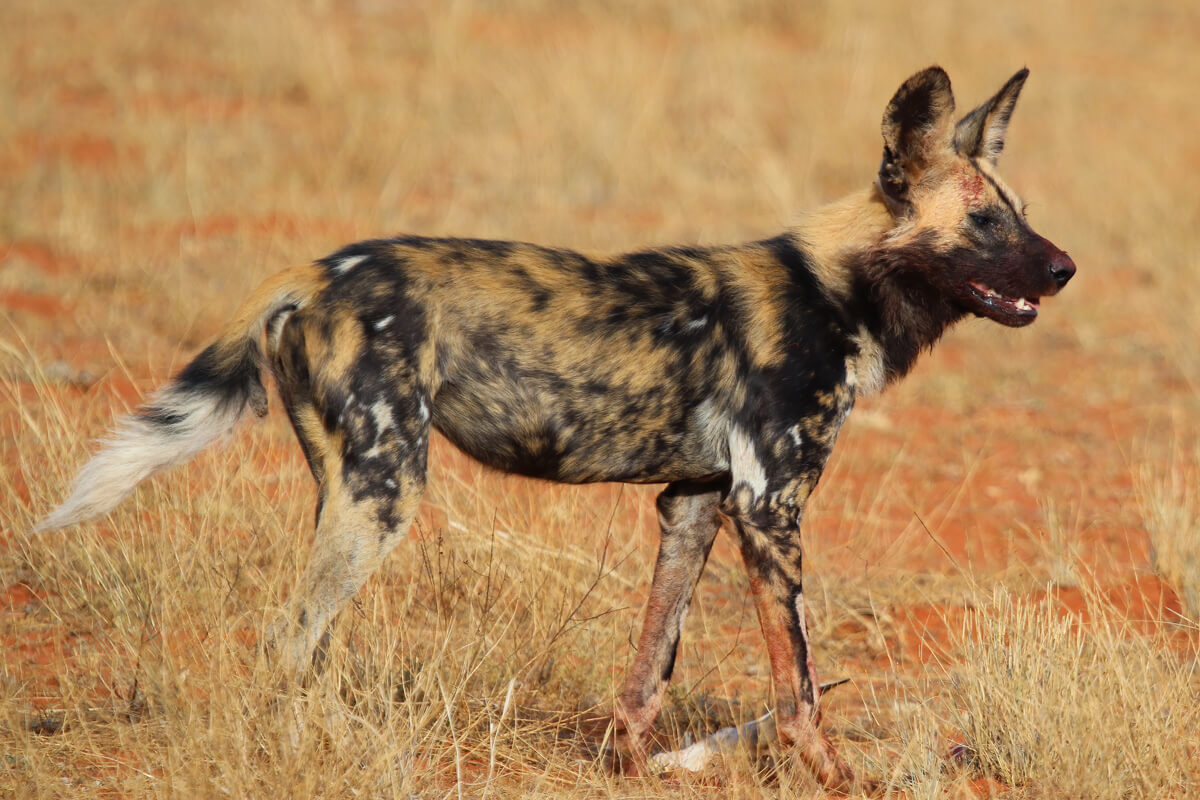
You can identify African wild dogs by their irregular coat of fur patterns which makes them look unclean and unkempt. They travel and live in large packs and can easily seem like a very aggressive bunch.
Each African wild dog has a different pattern of fur and colours and they can easily be identified as individuals. This is the same way cheetahs and zebras can be distinguished by their coat patterns.
Related: Why zebras have stripes.
2. Size & Weight
African wild dogs measure between 24 and 30 inches at the shoulder and 28 to 44 inches in body length. By comparison, this is slightly bigger than an adult German shepherd dog.
The African wild dogs weigh 18 to 36 kg and females are slightly smaller than males by around 5%.
3. Speed
During a hunt, an African wild dog can run very fast and reach speeds of up to 66 km/h which it can sustain for about an hour.
While animals, like cheetahs, are faster than African wild dogs, they get tired quickly while wild dogs have the endurance to chase the prey until it is exhausted.
4. Relation To Dogs & Wolves
While their Latin name - Lycaeon Pictus, translates to painted wolves, African wild dogs are neither wolves nor are they dogs.
Much as wolves, domestic dogs, and African wild dogs all belong in the Canidae family, the evolutional separation happened more than 2 million years before that of the wolf and dog. Adaptations in teeth, digits on the feet, and coat among others separate dogs and wolves from the African wild dog.
5. African Wild Dogs Habitat
African wild dogs (painted dogs) are very adaptable animals and can live in many environments, from savannah, and woodland to floodplains. These areas are good homes for other animals that the African Wild dog preys on for food.
This very adaptable nature means that the African wild dog is sparsely spread all over most countries in Africa.
6. Where To See Painted Dogs On Safari
While African wild dogs are present in many countries, the numbers are mostly low for many countries. Here are some countries where the numbers are high and you are likely to meet other interesting animals on your wildlife safari.
|
|
|
|
|
|
While African wild dogs are thought to still be present in many other countries, the above countries have good and healthy populations - hence you would have better chances of spotting their pack while on safari.
7. African Wild Dogs Pack Size
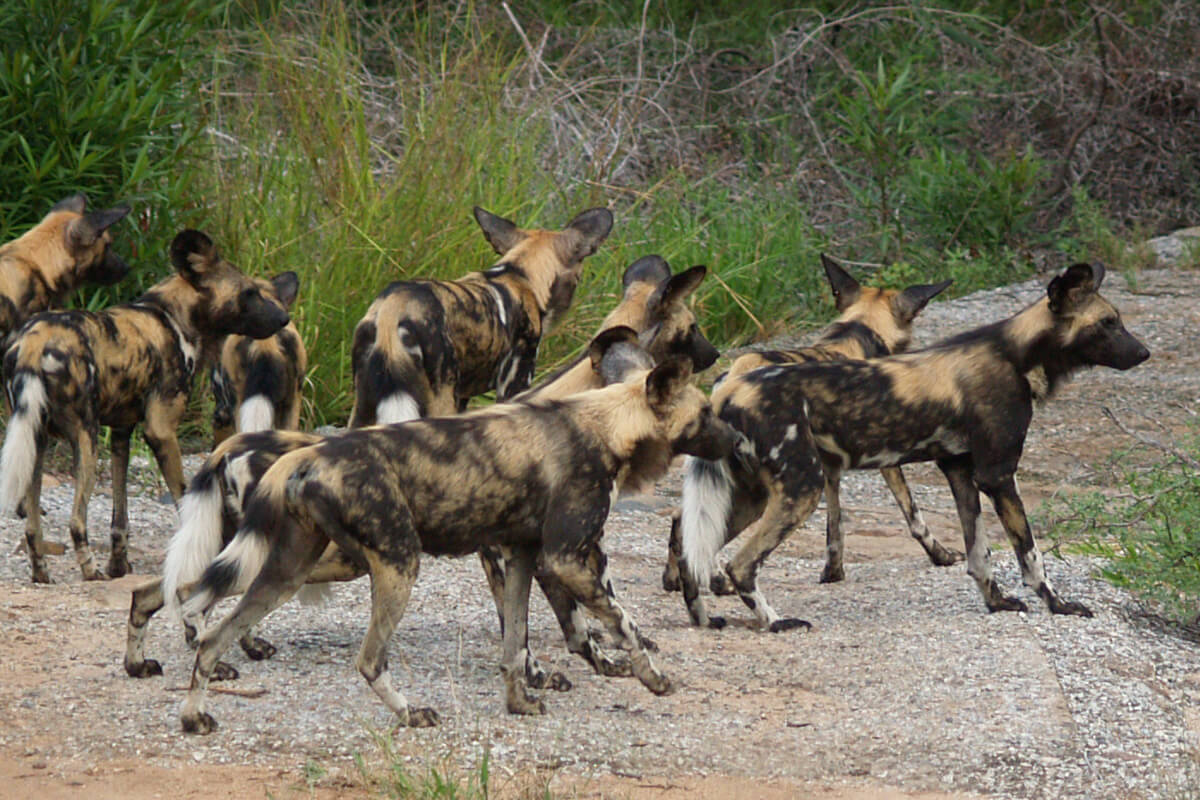
African wild dogs are very social and form packs of up to 27 adults and young puppies. On occasion, bigger packs of up to 100 individuals have formed in response to seasonal changes like migration.
8. Lifespan of African Wild Dogs
In the wilderness, the African wild dogs usually live for up to 11 years. In a captive environment like that of the zoo, they live slightly longer and can often make 13 years.
For context, this is comparable to the life expectancy of many predators such as cheetahs, lions, and leopards.
Related article: Lifespan of African animals
9. Parenting & Care For Puppies
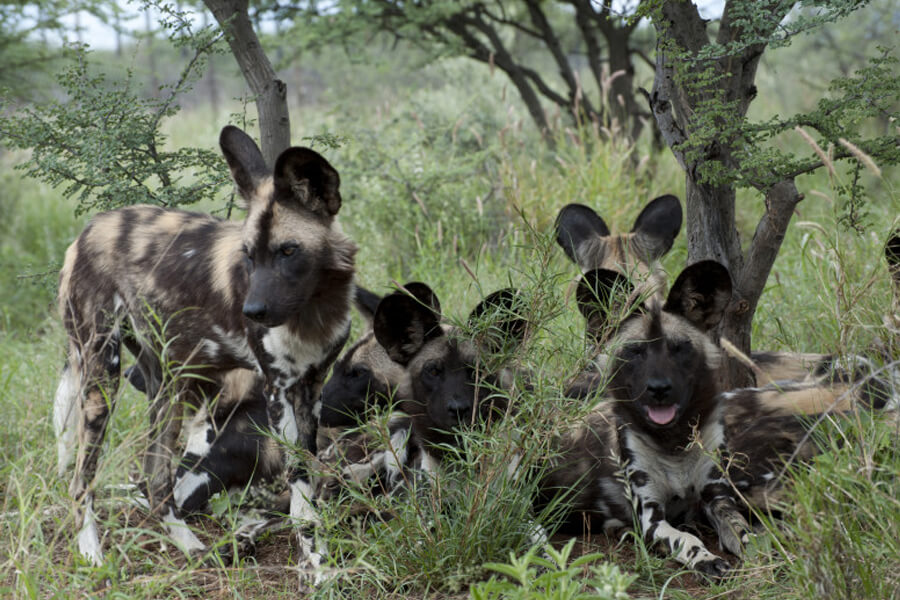
African wild dogs are very social animals and are fond of creating strong bonds with the entire pack. When it comes to feeding, the puppies are allowed to feed first before the older individuals.
When the wild dogs come back from hunting, they regurgitate the meat for the young puppies so that they can eat first.
10. African Wild Dogs Diet
African wild dogs are carnivores whose diet is comprised of meat. The wild dogs hunt and kill other small and medium-sized animals for the meat.
On average, it is estimated that an adult African wild dog eats between 1.5 and 2 kilograms (3 and 4.5 lbs) of meat every day.
The most hunted animals are gazelles, impalas, kobs, wildebeest, kudu, duiker waterbuck, oribi and hares. In the various areas, the common prey depends largely on what is largely abundant.
11. Hunting
African wild dogs are among the best hunters of all predators on the African continent. For every 5 hunts, 4 usually end successfully with a kill.
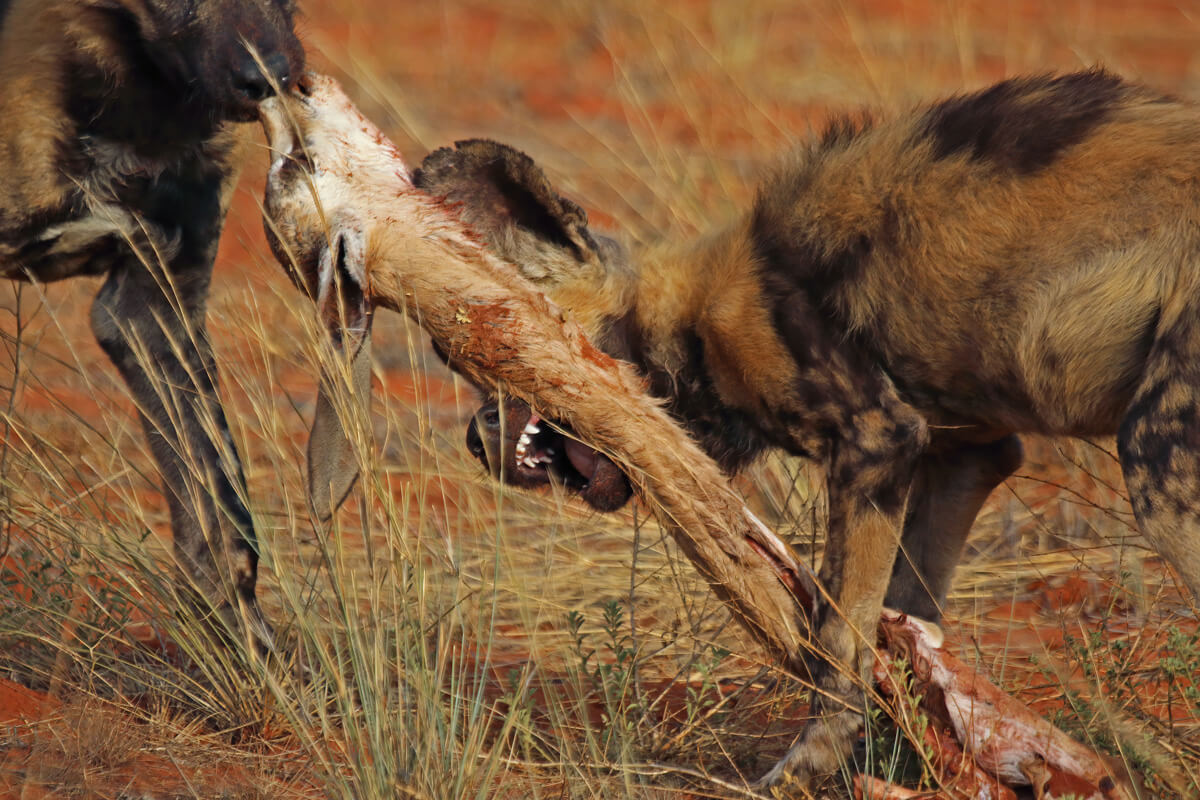
Painted dogs hunt in a pack and have great collaboration to help capture and kill their prey more than 80% of the time. For comparison, a lion's hunting success rate is around 30%.
Related article: Comparing hunting success of African predators
12. Hunting Strategy
African wild dogs are very successful hunters because they work very hard. They attack a herd of animals and cause a stampede by which they can easily spot the weak animal to target.
The targetted animal is chased until it gets tired from exhaustion at which point the dogs overpower it and start eating it before it is even dead.
13. Attacking Humans
African wild dogs, like all other wild predators, prefer to stay away from humans. They don't often go after domestic animals as that brings them in closer contact with humans, where they risk being killed.
These wild dogs only attack livestock or come closer to human communities when their food sources are in depleted.
While this is the norm, African wild dogs are still wild animals, and among the most successful hunters. You therefore must exercise caution and follow the guidelines of your park ranger as you go to see these painted dogs.
14. Conservation Status
The African wild dogs are considered an endangered species by the IUCN (International Union for the Conservation of Nature). The number of African wild dogs in the wild is thought to be decreasing.
While they are well adapted to many environments and ecosystems, African wild dog populations are highly fragmented, and very few places have a healthy and thriving population and concentration.
Related article: Africa's most endangered wild animals
15. Wild Population
According to data by Flora And Fauna, there are about 6,600 African wild dogs in the wild. Of these, about 1,400 are mature adults and the rest are puppies.
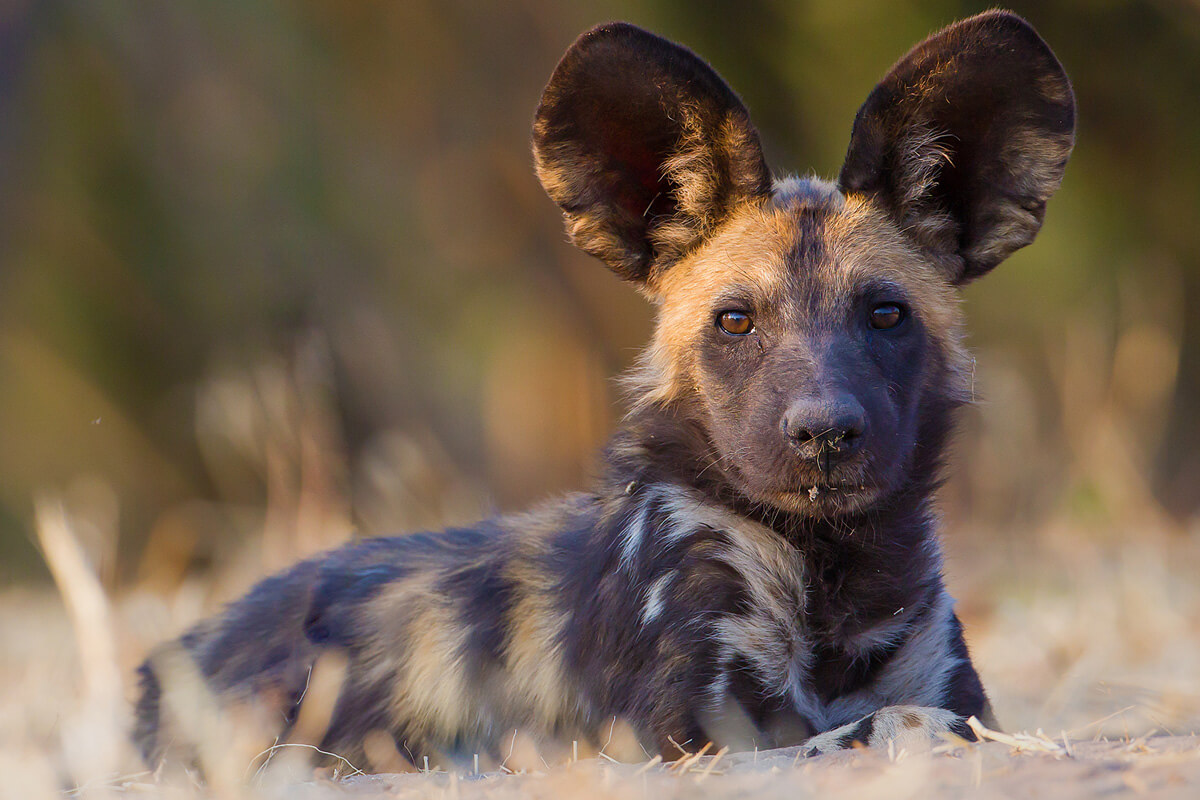
Given the distributed and fragmented populations, the task of saving these painted dogs is a tough and important one. Conservation efforts are ongoing and we hope we can contribute through tourism and help justify the protection of ecosystems where these wild dogs live.
Closing Thoughts.
The African wild dog is a very interesting animal, and while it is not as popular as the lion or the Big 5 safari animals, it equally commands respect in the wild, while being tender with its family (pack).
Now, if you happen to go on a safari where wild dogs are present, make sure to have your binoculars ready because you might be lucky enough to witness their legendary hunting skills - or just as they take care of the young adorable pups.
Additionally, tourism contributes to protecting the game parks and reserves where these animals (and many others) live, which means you will be doing something good for the planet.
